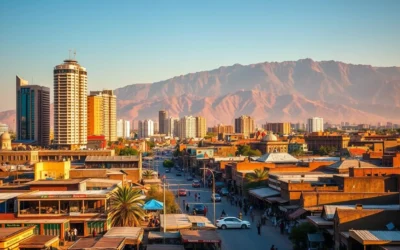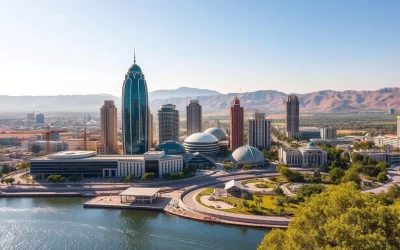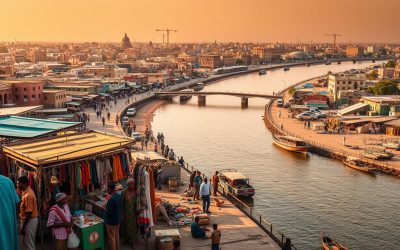Sudan is a country with a rich tapestry of cultures and languages. At its core, Arabic holds the status of the official language, deeply rooted in its constitution. Alongside Arabic, English plays a significant role in governance and education, making it the second official language of the nation.
Beyond these two, Sudan boasts an incredible diversity of indigenous languages. Over 114 native languages and more than 500 accents are spoken across the country. This linguistic variety reflects the unique cultural heritage of each group and person in the region.
Understanding the language landscape of Sudan offers insight into its identity and traditions. From the widely used Sudanese Arabic dialect to the lesser-known indigenous tongues, each language tells a story of its own. Dive deeper to explore how these languages shape the nation’s media, politics, and education systems.
Exploring Sudan’s Rich Linguistic Heritage
The linguistic tapestry of Sudan reveals a story of cultural richness and historical depth. This country is home to over 70 languages, reflecting its complex cultural and ethnic heritage. Each language carries the legacy of ancient civilizations and modern influences.
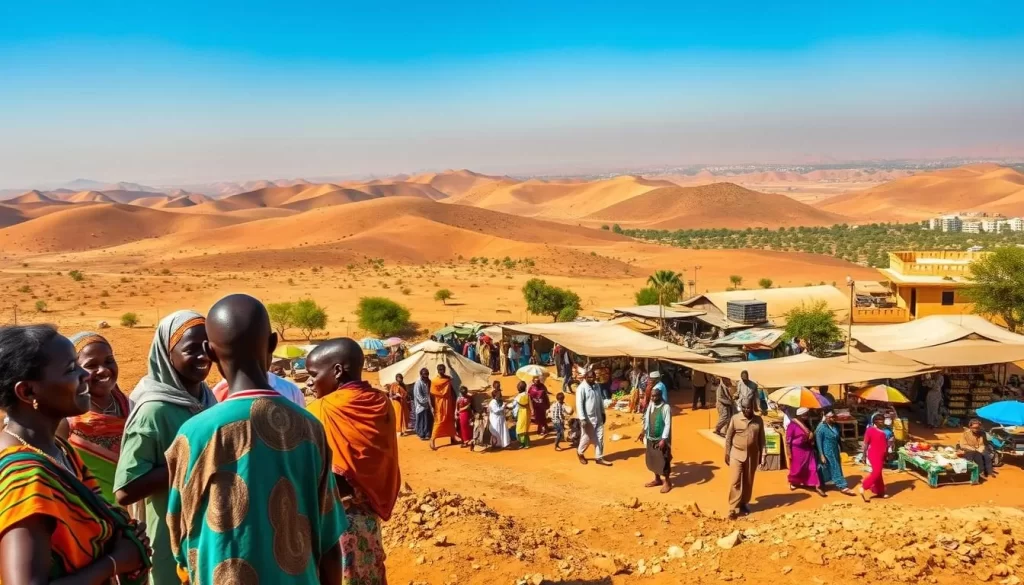
Cultural and Historical Context
Sudan’s linguistic diversity dates back thousands of years. Ancient Nubian culture and the Kingdom of Kush laid the groundwork for this region’s unique language families. Historical migration patterns and cultural exchanges have further enriched this heritage.
Indigenous languages like Nubian, Beja, and Fur remain vital for cultural identity and historical narratives. These tongues connect people to their roots and traditions, fostering a sense of belonging.
Diverse Language Families in Sudan
Sudan’s language landscape includes Afro-Asiatic and Nilo-Saharan families. The Nubian language family, for example, includes Kenzi, Dongolawi, and Mahas. These languages are a testament to the country’s enduring cultural pride.
In the south, Dinka and Nuer are prominent languages within the Nilo-Saharan family. Each language family reflects the unique identity of its ethnic group, showcasing the region’s diversity.
Understanding these language families helps you appreciate Sudan’s cultural evolution. It also highlights the importance of preserving these languages for future generations.
Sudan: Official and widely spoken languages
From governance to media, linguistic choices influence public life. Arabic holds the status of the official language, deeply embedded in formal settings like politics and education. English, on the other hand, serves as a secondary language, particularly in administrative and academic contexts.
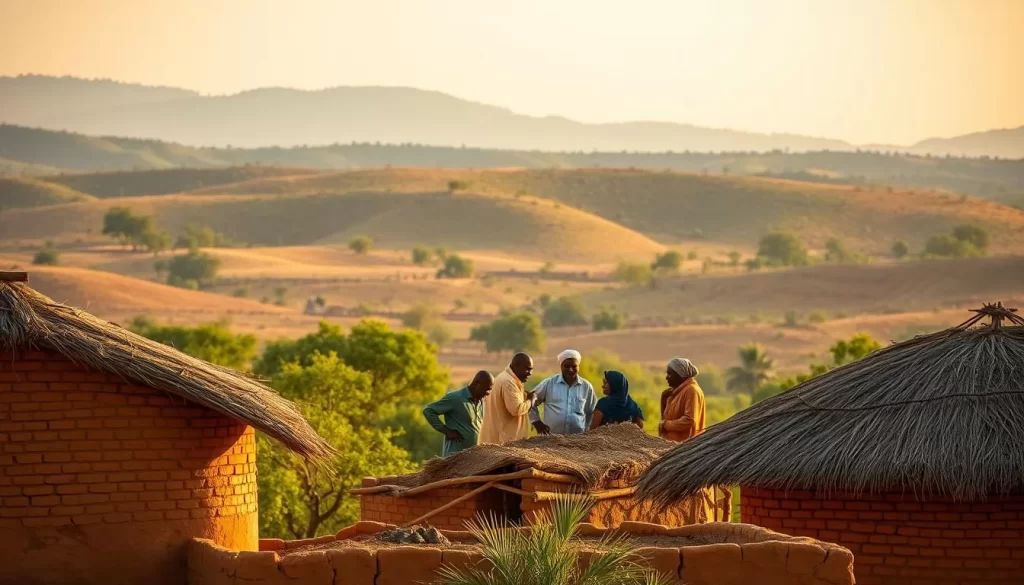
Role of Arabic and English in Governance and Media
In this region, Arabic dominates official communication. Modern Standard Arabic is used in government documents, media broadcasts, and academic publications. English complements this by facilitating international relations and higher education. This dual-language system ensures clarity and accessibility across diverse groups.
Media outlets often rely on Modern Standard Arabic for news reporting and official announcements. However, colloquial dialects like Sudanese Arabic are more common in everyday interactions. This blend of formal and informal language shapes how information is shared and understood.
Distinction Between Modern Standard and Colloquial Dialects
Modern Standard Arabic is the backbone of formal communication. It’s used in legal documents, official speeches, and educational materials. In contrast, Sudanese Arabic, a colloquial dialect, is the language spoken at home and in casual conversations. This distinction highlights the adaptability of language in different contexts.
In the south, Juba Arabic, a pidgin form, has gained popularity. It bridges communication gaps between diverse groups and reflects the region’s linguistic diversity. Understanding these variations helps you appreciate the complexity of language dynamics here.
| Language Form | Usage Context |
|---|---|
| Modern Standard Arabic | Formal settings like governance and media |
| Sudanese Arabic | Everyday conversations and informal interactions |
| Juba Arabic | Southern regions, bridging communication gaps |
These language forms coexist, each serving a unique purpose. They reflect the country’s rich cultural heritage and its ability to adapt to modern needs.
Indigenous and Regional Languages in Sudan
The cultural mosaic of this region is deeply rooted in its indigenous languages. These tongues are more than just communication tools—they are carriers of history, identity, and tradition. Over 160 languages are spoken by 123 racial groups here, reflecting a vibrant linguistic heritage.
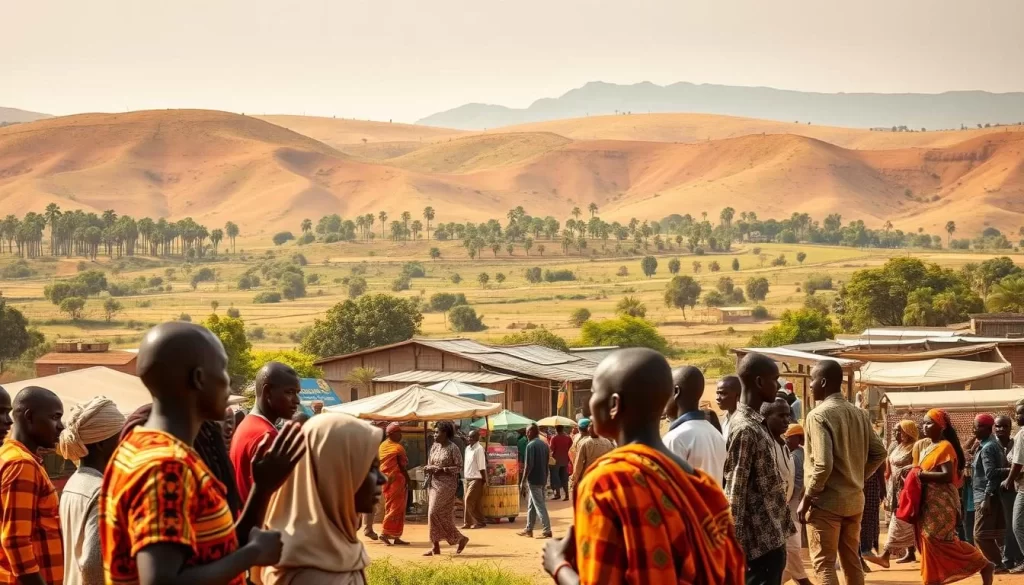
From the Afro-Asiatic family to the Nilo-Saharan and Niger-Congo families, each language tells a unique story. Let’s explore the depth and breadth of these linguistic treasures.
Afro-Asiatic Languages: Beja, Hausa, and Variants
The Afro-Asiatic family includes Beja and Hausa, two languages with significant cultural importance. Beja, spoken by about 2 million people, is a cornerstone of identity for its speakers. Hausa, with around 80,000 speakers, also plays a vital role in this region’s linguistic landscape.
These languages are not just spoken at home—they are symbols of pride and heritage. They connect people to their roots and preserve ancient traditions.
Nilo-Saharan, Nubian, and Niger-Congo Language Families
The Nilo-Saharan family is well-represented here, with languages like Dinka and Nuer. These tongues are spoken by large communities, particularly in the south. They are integral to the cultural identity of their speakers.
Nubian languages, pivotal in the northern and Darfur regions, are another key part of this linguistic diversity. They are a testament to the enduring cultural pride of their communities.
Niger-Congo languages, such as Zande and Kordofanian, add another layer to this rich tapestry. These languages are spoken in specific areas, contributing to the region’s unique identity.
| Language Family | Key Languages | Speaker Population |
|---|---|---|
| Afro-Asiatic | Beja, Hausa | 2 million, 80,000 |
| Nilo-Saharan | Dinka, Nuer | Large communities |
| Niger-Congo | Zande, Kordofanian | Specific regions |
These languages are more than just words—they are the heartbeat of their communities. They preserve history, foster identity, and connect people to their heritage. To learn more about the linguistic diversity of this region, explore this detailed resource.
Conclusion
The linguistic diversity of this country is a testament to its rich cultural heritage. Arabic, as the official language, plays a central role in governance and education, while English supports international communication. Indigenous languages, such as Nubian and Dinka, continue to shape the identity of their groups, preserving traditions and history.
In the south, dialects like Juba Arabic bridge communication gaps, reflecting the region’s adaptability. Language families, including Afro-Asiatic and Nilo-Saharan, highlight the area’s complexity. Each language tells a story, connecting people to their roots and fostering unity.
Understanding this dynamic language landscape offers insight into the country’s identity. It also underscores the importance of preserving these languages for future generations. To explore more about this fascinating topic, visit this detailed resource.
The above is subject to change.
Check back often to TRAVEL.COM for the latest travel tips and deals.


